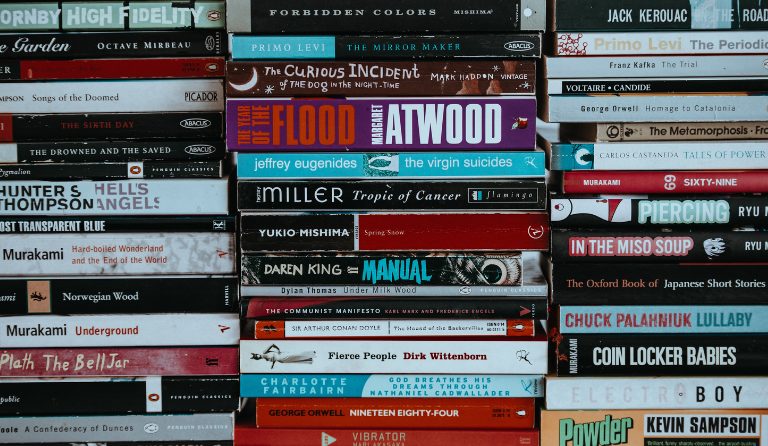How To Learn a Language Fast: Polyglot Shares His Secrets
Many of us dream about the possibility of learning to speak a second language or, if we’re lucky and work really hard, potentially a third. But the ability to speak more than three languages is so rare that it seems almost impossibly out of reach.
Yet there are people among us — polyglots, as they’re called — who serve as walking, talking evidence that teaching yourself how to speak five, six, seven, and even eight languages is not only possible, but it’s more achievable than you might think.
In a recent webinar, we spoke to one such polyglot, Olly Richards, in an attempt to gather some actionable, effective tips on how to learn a new language, from somebody with a wealth of experience doing so.
In addition to speaking eight languages (French, Spanish, Portuguese, Japanese, Thai, Arabic, Cantonese, and Italian) Richards is well known online for being the man behind the popular website I Will Teach You a Language and the creator of the StoryLearning® method. Let’s check out his advice on how to learn a new language fast.
Mục Lục
10 Tips to learn a language fast
Looking to expand your horizons by learning a new language? Well, there’s no better way to learn how to do something than to get advice from somebody who has done so successfully themselves. To that end, here are 10 language learning tips from Olly Richards, who has done it not once, not twice, but eight times.
1. Start with short, simple dialogues
Richards believes that it’s possible to become conversational in a language in just 90 days — as he did with Italian — by starting with reading and listening to stories. But how can you do that when you’re so new to the language that you barely understand a thing? Well, Richards says, “At the beginning, you need to use material that’s really, really simple.”
In the first week or so, even if you just stick to reading the short simple dialogues that you might find in a beginner language learning textbook, you’ll still be exposed to the 100 or 200 or so words that make up 50% of a language.
You can start by making your own simple dialogues with our guide to start speaking, or take these phrase lists as inspiration.
2. Focus on comprehensible input
If your goal is learning languages fast, it’s key to familiarize yourself with the concept of comprehensible input, or “the idea that you should read or listen at your level or slightly above.”
So if you’re just starting to learn Spanish, it’s probably too early to watch an entire movie in Spanish. Instead, at every stage of your language learning journey, you’ll want to find material that is just above your level.
Very quickly, you’ll start understanding more than you think and be ready to start reading non-fiction material or stories. By reading, you access everything you need for comprehensible input; you get to study at your own pace while highlighting vocabulary you don’t know. And stories, in particular, are effective because their structures are universally relatable, giving you a base that you already understand.
Beyond that, stories allow you to have an experience, engaging your entire brain in the learning process instead of just the left brain that may be involved when you’re only learning grammar. Learning through stories is more natural, similar to how native speakers learn their own language.
So choose some reading material that you like. If it’s fun, you’ll get it done.
3. Study pronunciation very early on
With languages, you can always learn more vocabulary and more grammar, but one thing that you can’t fix later on is pronunciation. That’s why Richards is a “big believer that one of the first things you should do with a new language is really study pronunciation, because it’s much easier to get it right at the beginning than try to fix it later on.”
As Gabriel Wyner says in his book Fluent Forever,
I encountered three basic keys to language learning:
1. Learn pronunciation first
2. Don’t translate
3. Use spaced repetition systems
How can you practice pronunciation? The best way is to learn with native speakers so you can hear how they pronounce things, and then mirror them by repeating the same sounds over and over until they begin to feel natural in your mouth.

4. Read wisely, not widely
Of course, as important as reading is for language learning, not all reading is created equally. Richards offers a few specific keys to reading in a foreign language.
-
Read the chapter from the beginning to the end and try to understand as much as possible
-
Go back and reread the chapter
-
Now you can look up the words that are repeated throughout the chapter
-
Move on to the next chapter
-
Repeat
Additionally, there’s value in narrowing the focus of your reading materials. Focus on choosing the right books, ideally some that are related to your hobbies and interests. Olly Richards says, “If you are really into gardening, for example, then look for books on gardening in your target language.”
The idea is to learn things you want to and have intrinsic motivation to understand. Contrary to many common suggestions, Richards actually recommends not using the Harry Potter series to learn a language, as it’s filled with odd vocabulary you’re not going to use in real life — unless you’re a wizard.

5. Start speaking early
While we’ve focused a lot of tips on input, let’s not forget the critical importance of speaking. After all, when Richards learned Italian in 90 days, he spent his entire second and third months actually speaking Italian.
To that end, if you want to learn a language fast, Richards recommends to already start speaking and having daily conversations in the second month. He explains, “It’s a bit earlier than I would normally recommend, but because we’ve got this goal of speaking quickly, we’ve got to start”.
There are many opportunities to speak a new language even if you can’t travel to a country where that language is spoken. You can opt for attending a language exchange, using a language exchange app with on-the-go speaking tools, or use a service like Preply to take daily one-on-one lessons, or language training for business, with a language tutor .
6. Immerse yourself in the language
Once you’ve trained your ability to “get the language out of your mouth and speak it,” you need to start doing the same things as before “on steroids.” The idea is to speak to as many people as possible and get as much language input through reading and listening as you can.
In order to create as much immersion as possible from your home without traveling to a foreign country, you need to find ways to input your target language into your life. As we mentioned above, it can help tremendously to learn around your own interests in order to keep yourself engaged and interested as you learn the language.
For more tips on creating an immersion environment from home, check out this article.
7. Learn one language at a time
As a polyglot who has taught himself to speak eight languages, the most common question Richards receives is, “How can I learn more than one language at the same time?”
His advice? “Don’t do it… Let’s face it, learning one language by itself is hard enough, right? And there’s a direct correlation between focus and the amount you learn.” The more focused your learning is, the more time you spend in a language, the faster you’re going to learn. Adding a second language just divides your time and attention.
That being said, if you really just want to learn two languages at the same time and you’re not as focused on speed, Richards encourages you to go for it, as long as you understand “that it’s going to slow you down.” And if you are committed to learning two different languages at once, try to choose two languages that are very different (such as Spanish and Japanese) in order to avoid confusion.

8. Focus on real concentrated study… not cheap hacks
Just like anything that requires hard work, there’s no shortage of myths and shortcuts floating around in the public discourse on learning a language quickly. But the truth is that with language learning, you won’t get results by putting in the minimum amount of effort.
So, can you learn a language while sleeping or is it a waste of time? Richards doesn’t hesitate to answer: “A waste of time.”
Got it… let’s move on.

9. Turn off the subtitles when watching TV
Another common “hack” for learning languages is to watch TV and movies in that language. In fact, Richards isn’t such a fan of this as a core language study format. In his opinion, “movies are not a very convenient format” as they’re long and you only see one sentence onscreen at a time, as opposed to a book where it is easy to scan, read, and reread. As such, Richards is not a big fan of movies “as the main study vehicle.”
That being said, if you are going to watch movies or TV in a foreign language as a supplemental learning tool, you’d better turn off the subtitles. Because when you turn the subtitles on, you’re not listening anymore, you’re reading. And if you’re reading a movie in English, you won’t be learning much in a foreign language, will you?
The bottom line? “Don’t be under the illusion that by watching a movie for two hours you are making big progress in your language skills because unfortunately, you’re not.”
10. Have a strong “Tolerance for ambiguity”
You might be a bit shocked by the idea that a person can learn a new language to a conversational level in three months. For most of us, it takes much longer. Doesn’t it?
Well, when asked what makes language learning take longer than it should or has to, Richards explains that language learners need to have a strong “tolerance for ambiguity.” This means you have to be okay with the millions of things you don’t understand when learning a language.
If you get caught up by checking every single word in a text that you don’t understand, it’s simply too inefficient and takes too much time.
But when you have a high tolerance for ambiguity, as good language learners do, you can be comfortable being a bit lost. By tolerating ambiguity, we liberate ourselves to keep to the fundamentals, while also being open and curious about the language to learn more.
The biggest mistake you can make is insisting on knowing everything.
Learning a language can take as long as you need
While these ten tips from Richards focus on helping you learn a language at breakneck speed, they’re just as relevant and useful for people who are able and willing to take their time learning their target language.
Because unless you have a good reason to set a goal of learning a new language in 90 days, there’s no reason to stress out too much about learning a language fast. If you have to compete with anybody, compete with the person you were yesterday, not somebody external to you.
Celebrate the small, incremental improvements that are the bread and butter of language learning. After all, the best ways to learn a language are the ones that work for you. So enjoy the process!















![Toni Kroos là ai? [ sự thật về tiểu sử đầy đủ Toni Kroos ]](https://evbn.org/wp-content/uploads/New-Project-6635-1671934592.jpg)


